I have encountered sea hares many, many times, both in rock pools on the seashore and whilst diving around the coast. I adore them. Bubble snails however, I met for the first time a few months ago. It was love at first sight. I hope you will love them too.
What both these animals have in common are that, in evolutionary terms, they lie somewhere half way in between the periwinkles you commonly find on the seashore and the beautiful but often tiny nudibranchs most frequently found by divers. Periwinkles have a typical snail shell that they can completely retreat inside when they need to. Nudibranchs on the other hand have entirely lost their protective shell during their evolution and instead rely on noxious chemicals and bright warning colours to deter predators.
Both sea hares and bubble snails retain a shell, albeit much reduced and completely useless with regards to offering protection. They cannot retreat inside it but nevertheless it remains, hidden to varying degrees beneath their mantle. They are to all intents and purposes, naked snails.
Sea hares are grazers of seaweed, frequently spotted both on the seashore and below water, often aggregating in huge numbers for breeding in spring and summer. They get their name from their brown coloration and the long, sensory head tentacles (rhinophores) that vaguely resemble the ears of a brown hare.
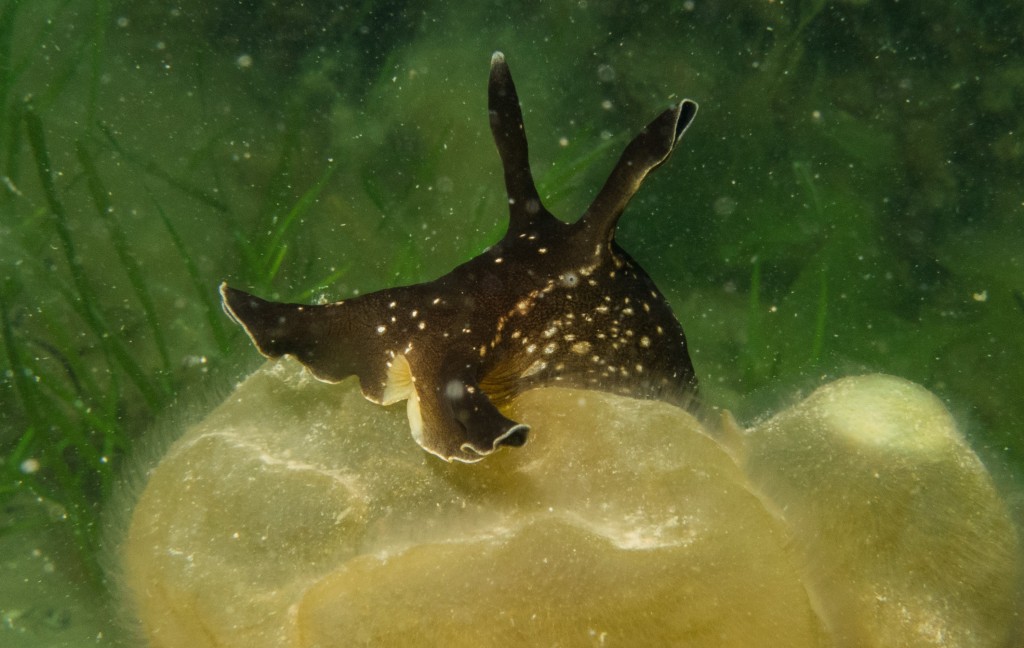
The first time I encountered sea hares in mind-blowing numbers was in the rock pools of the Dingle peninsula in Ireland. They were EVERYWHERE! You had to watch where you put your feet so as not to tread on them. Some were keeping moist in the pools of water, others were amongst the damp seaweed but many were stranded on open rock exposed by the ebbing tide to the sun and wind of a warm May afternoon. I rushed around moving the most vulnerable to shade and water but it was a monumental and ultimately impossible task.
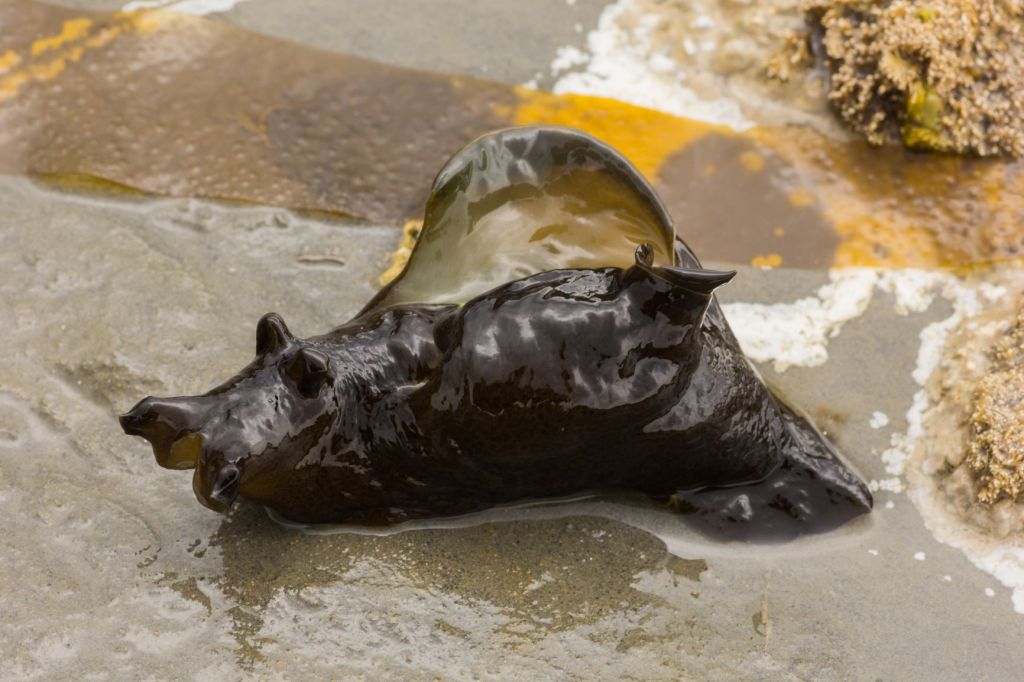
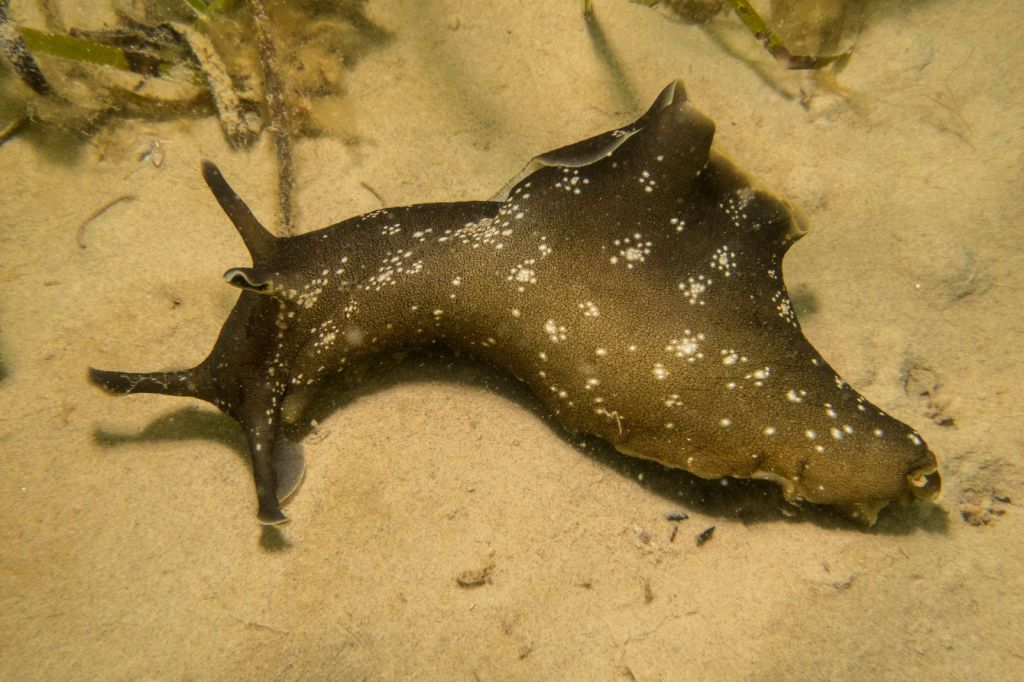
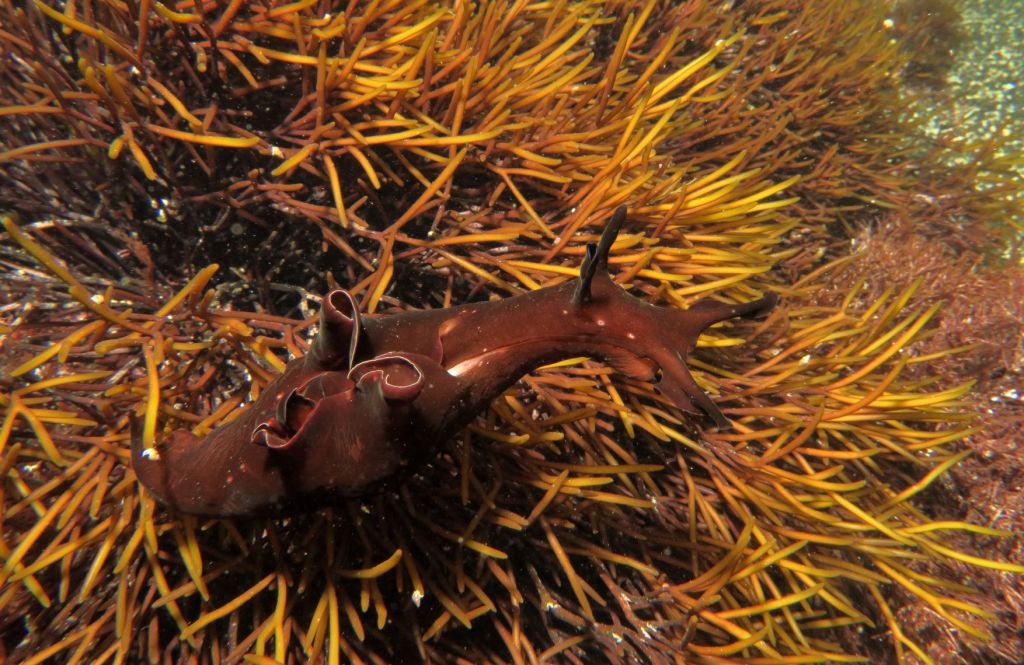
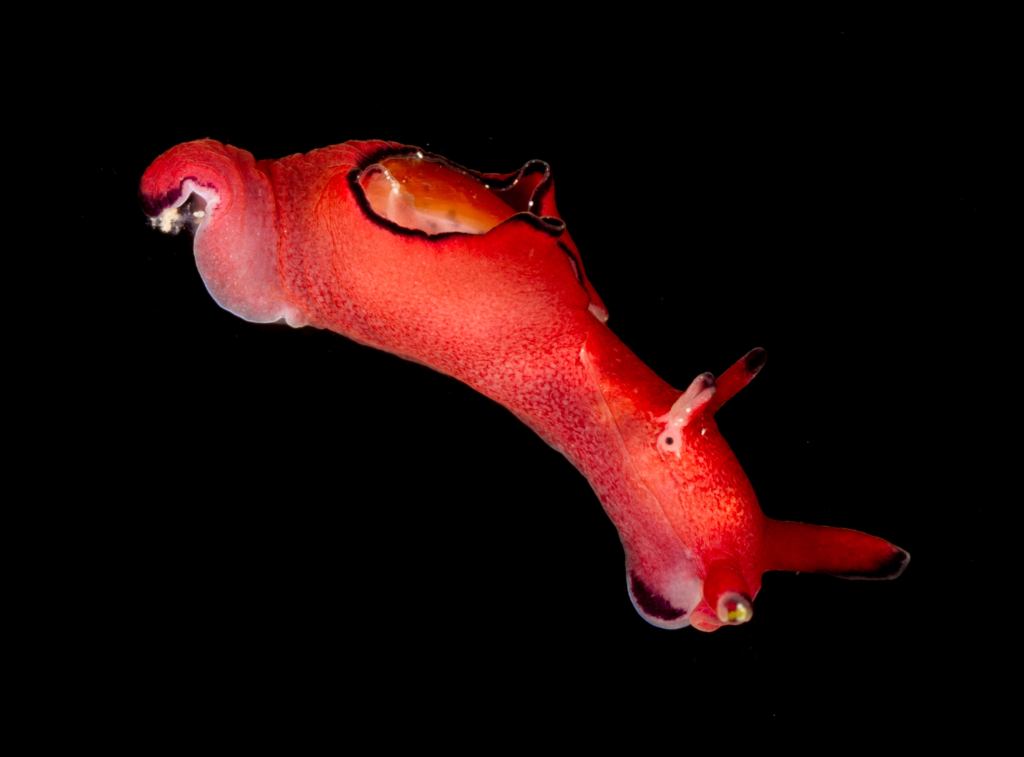
I have seen smaller but nevertheless impressive aggregations at Kimmeridge where I work, delighting visiting groups of school children who get very excited, once they have got their eye in, spotting more and more of them among the rock pools. I have also seen them many times whilst diving, surrounded by them dripping from seaweed fronds and gathering in groups, swaying gently in the swell. Sea hares are hermaphrodite, forming chains like conga-dancing lines, acting simultaneously as the male to the individual in front and female to the one behind. Our dear friend, Andy Jackson, a wonderful underwater film-maker who sadly passed away last year, filmed some amazing shots of sea hares which you can see here.

However, in 2019 my love and fascination for sea hares reached a new level when Steve and I stumbled across a dense aggregation in the shallow waters of our local harbour. These were sea hares like we’d never seen before. If you look at descriptions of the common sea hare species, Aplysia punctata, the size range for the animal is up to 20cm long. These sea hares were much larger! Measuring up to 28cm long there were masses of them; on the bare sand, in the eelgrass meadow, amongst the seaweed, in twos and threes as well as single animals. Being underwater in our dive kit it was easy to photograph them and we filled our boots! We returned day after day, week after week, eventually witnessing them gathering in chains and producing their pink, silly-string egg ribbons on every surface.

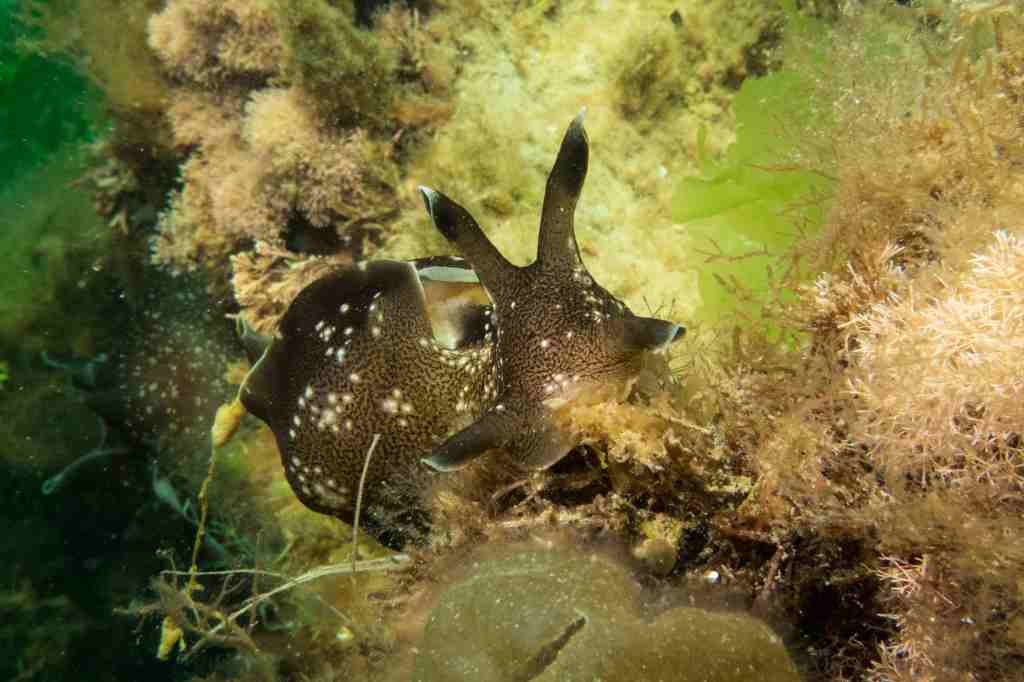
While we were visiting the ‘giant’ sea hares we also noticed loads of jelly-like, Quaver-shaped egg masses all over the eelgrass. These were the eggs of bubble snails, a creature I had never seen. Although we searched, not a single adult was to be found. We dived during the day time and we dived under cover of darkness, still nothing. It wasn’t until the end of the year, in November, that I saw my first bubble snail, long after the eggs had all hatched and disappeared.
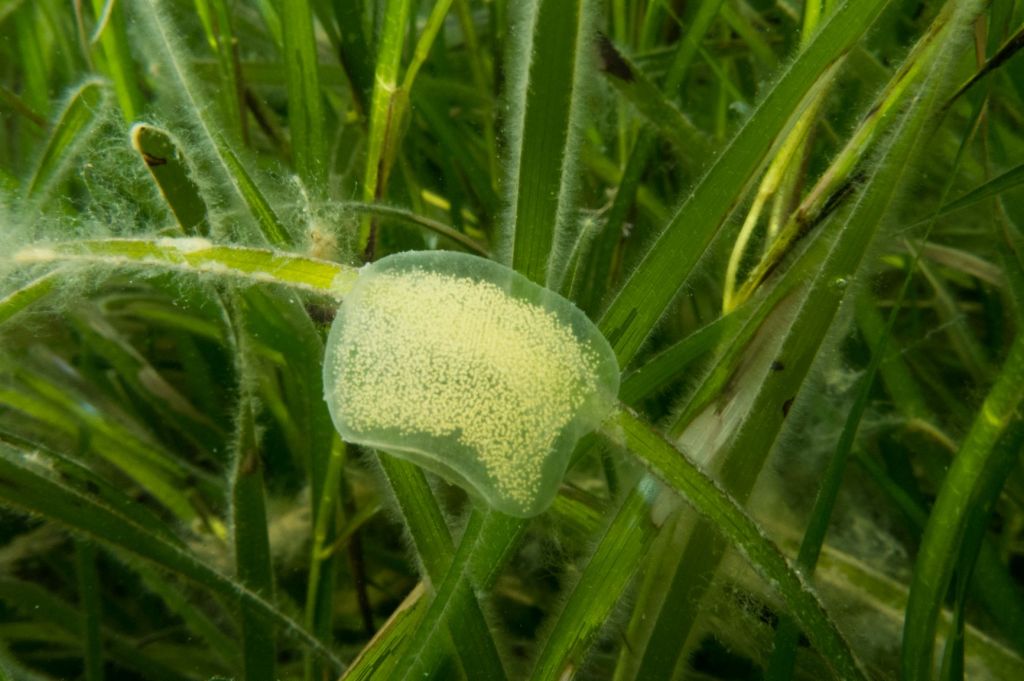
Bubble snails are a blunt-headed snail with a little bubble, the remnant shell, situated towards their back end, almost completely covered by their mantle flaps, and so thin and fragile as to be transparent. The tiny eyes, just light-sensitive eye-spots really, are close together and give a comedy character to its face. As it moves across the fine sand of the seabed, it produces a cloak of mucus that completely covers it, allowing it to glide over the sediment but also pushing any stray sand grains up over the animal in a transparent conveyor belt. Like the sea hares, these snails were everywhere, dangling from the eelgrass blades and making their way over the sand in graceful slow-motion.
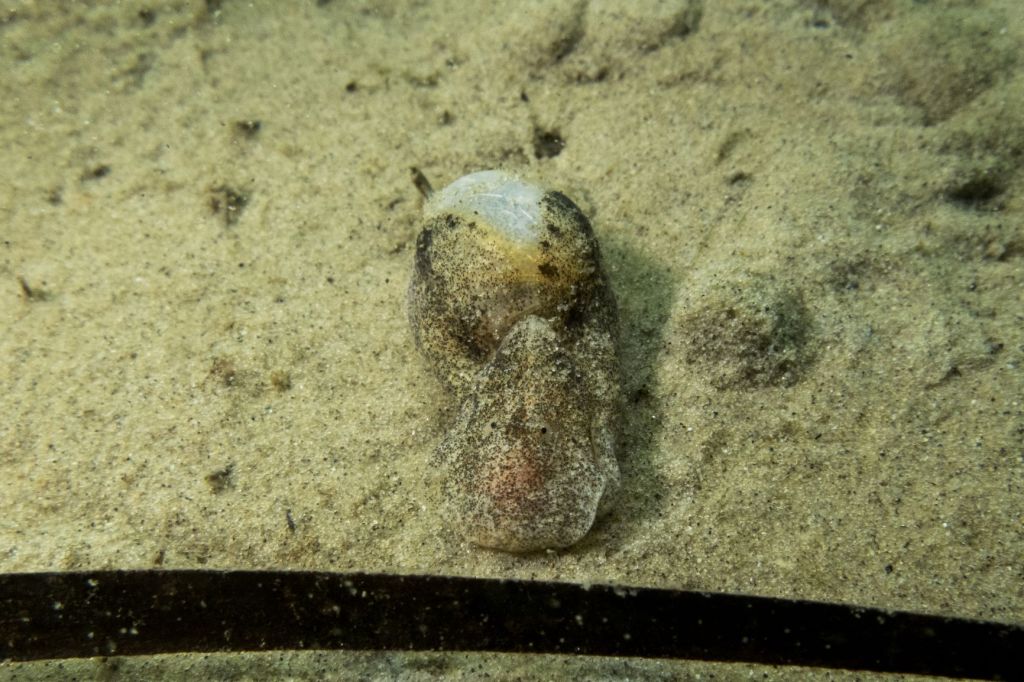
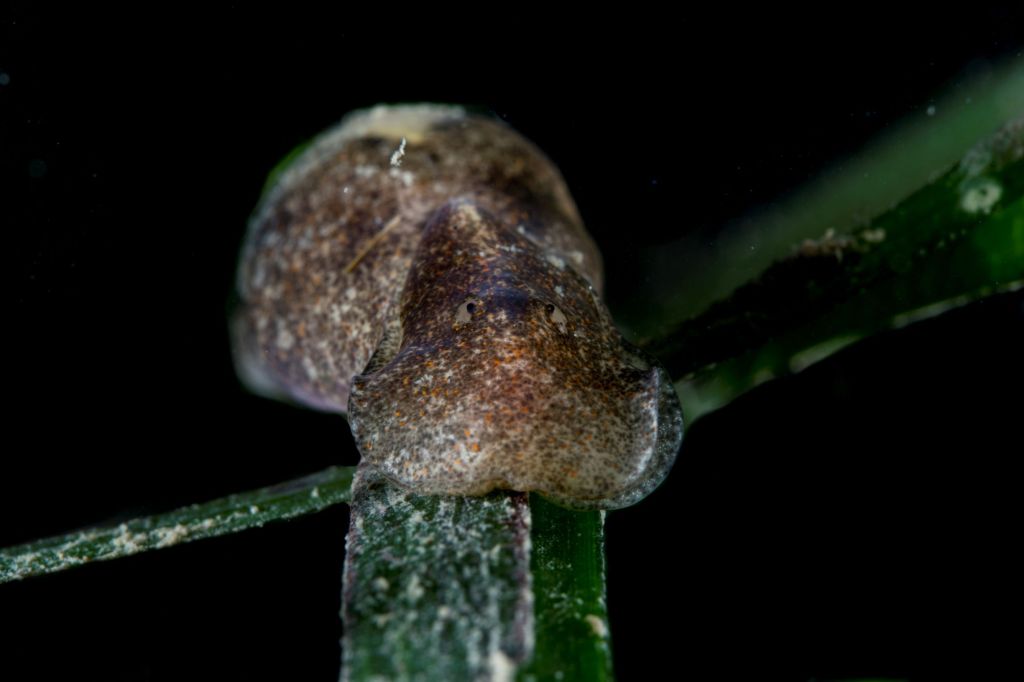
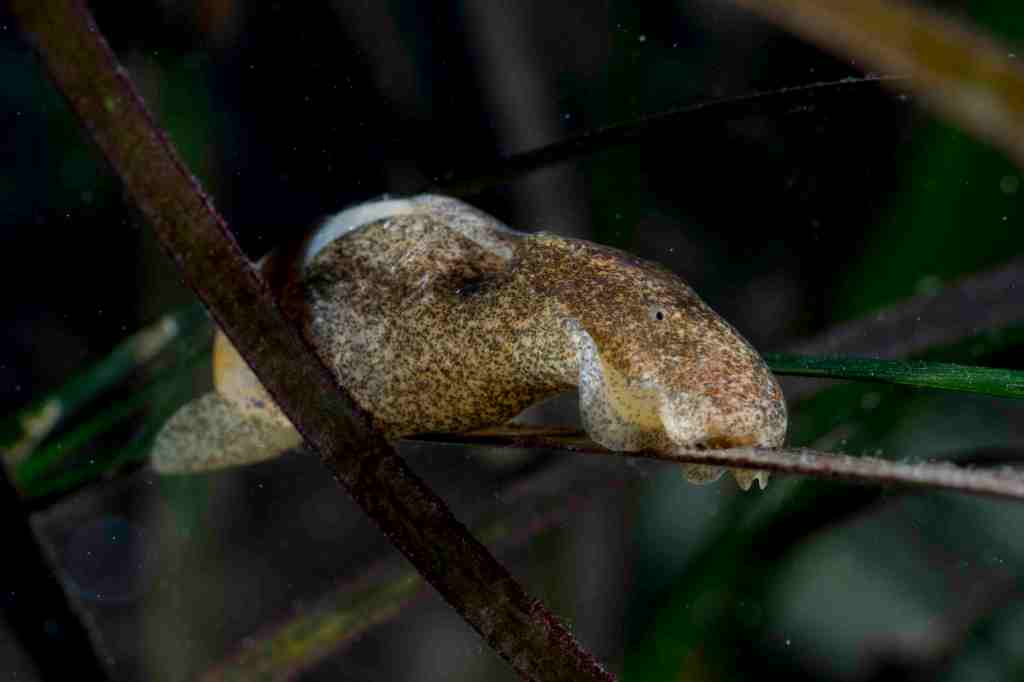
Other sea snails with remnant or absent shells, related to sea hares, include the tiny Solar-powered sea slug, Elysia viridis, and the confusingly-named bubble shell, Akera bullata,which is in the sea hare group and not a bubble snail. The solar-powered sea slug looks like a smaller, greener version of a sea hare at first glance but has a very impressive trick up its mantle. While it feeds on seaweed it is also capable of producing its own energy by trapping sunlight via photosynthesis. It passes the chloroplasts from its diet into its mantle where, when exposed to sunlight they continue to photosynthesise. To do this it unfurls the mantle flaps along its back, exposing the chloroplast-filled tissue and in effect turning itself into a leaf, both in form and function.


While these animals appear from time to time in mass aggregations, they retain a certain amount of mystery to themselves. Where do they go and what do they do during their times of absence? What are the bubble snails doing all through the spring and summer while their eggs festoon the eelgrass blades and why do they wait for the depths of winter to emerge into the open? Why do sea hares only occasionally appear in the spectacular numbers I’ve witnessed? I like that they retain these mysteries, it makes rock pooling and diving more exciting and interesting. I wonder what we’ll see this year?

